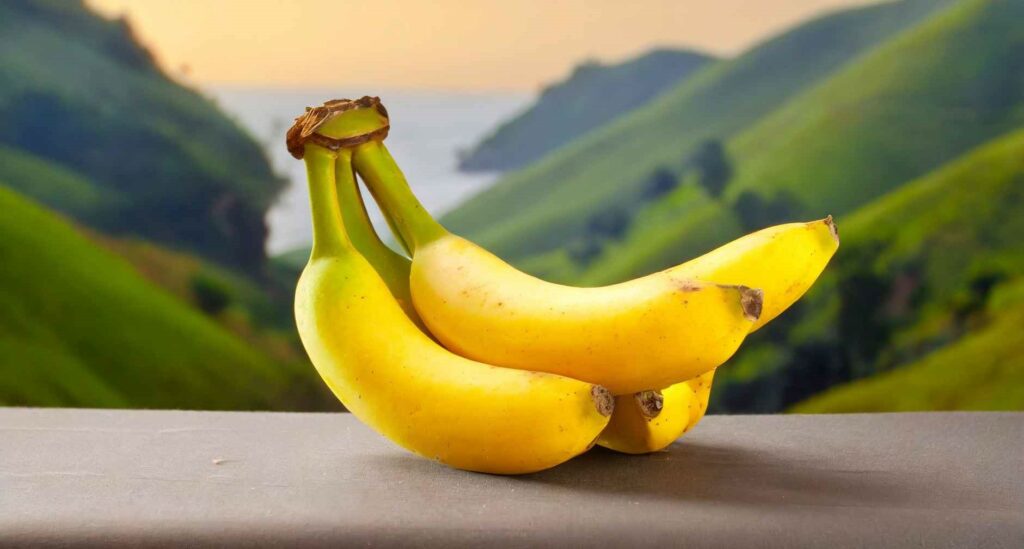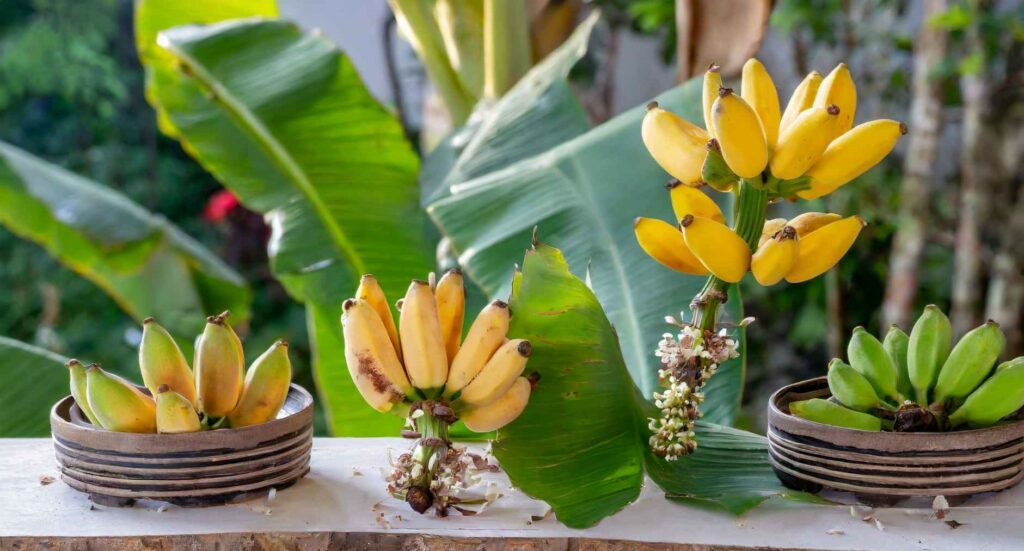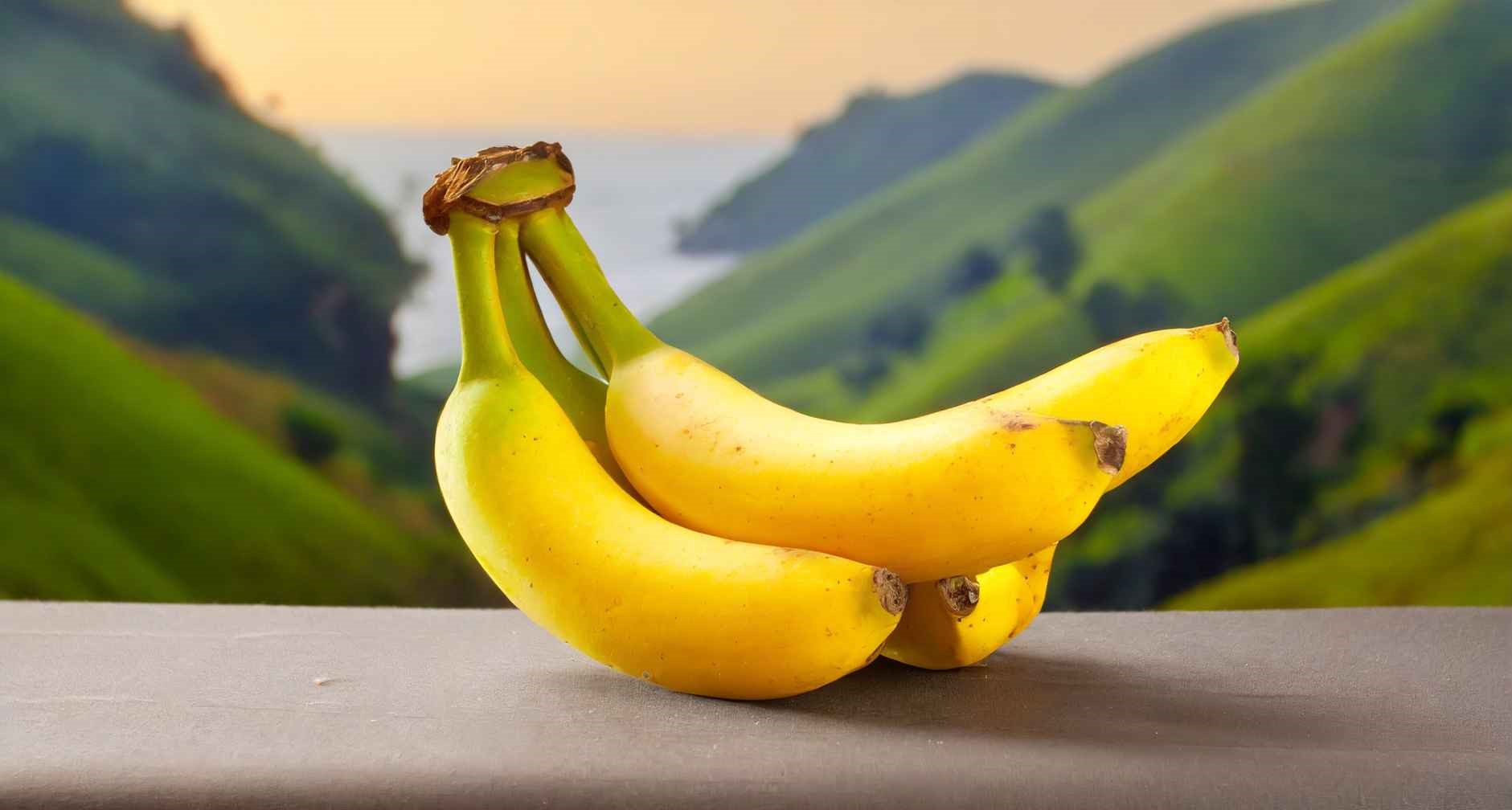Welcome, fellow banana enthusiasts! I’m Waqar, your trusty guide in the world of baby bananas. Buckle up, ’cause we’re about to dive into the miniature marvels of the banana kingdom. We’re not just talking about bananas; we’re talking about BABY bananas! Get ready for a whimsical adventure as we explore the origins, characteristics, and more.
A Brief History of Baby Bananas
Table of Contents
Let’s peel back the layers of history. Baby bananas, scientifically known as Musa acuminata, originate from the Southeast Asian rainforests. They’re descendants of wild bananas, which were first cultivated in Papua New Guinea over 7,000 years ago.
Baby bananas earned their spot in the historical limelight when they were introduced to the world through the African and Arabian trade routes. These miniature delights made their way to the Americas during the early colonial period, and the rest, as they say, is banana history.
Characteristics That Make Baby Bananas Stand Out

So, What Makes Baby Bananas So Special?
- Size Matters: The most apparent feature, they’re petite, measuring just a few inches long. A regular banana seems like a giant in comparison!
- Adorable Packaging: They come with a peel that’s easier to handle, making them an ideal on-the-go snack.
- Sweetness Overload: Baby bananas are sweeter than their larger counterparts, boasting a flavor profile that’s a delightful blend of honey and regular banana goodness.
- Nutrient-Dense: Don’t let their size fool you; they pack a nutritional punch with essential vitamins and minerals.
- Versatile Treats: Perfect for snacking, smoothies, and even baking, these little wonders are a versatile addition to your culinary arsenal.
Varieties of Baby Bananas

Get to Know the Babies:
| Variety | Size | Flavor | Origin |
|---|---|---|---|
| Dwarf Cavendish | Small and plump | Sweet with a hint of apple | Southeast Asia |
| Lady Finger | Slender and elegant | Extra sweet and creamy | Papua New Guinea |
| Namwa | Stout and curved | Mild and sweet | Thailand |
Caring for Baby Banana Plants
Banana plants might seem like divas, but caring for baby banana plants is easier than you think. Just follow these basic guidelines:
- Sunlight: Baby bananas love sunlight. Give them at least 6 hours of direct sunlight a day.
- Water: Keep the soil consistently moist but not waterlogged. They’re thirsty, but they don’t want to swim!
- Fertilize: Provide a balanced fertilizer every 2-3 months to keep your baby banana plant happy.
- Pruning: Trim away dead or damaged leaves to encourage new growth.
Nutritional Punch of Mini Bananas
The Power of the Mini Banana:
- Potassium: These little gems are potassium-rich, great for heart health and blood pressure regulation.
- Vitamins: Packed with vitamins like C and B6, they’re excellent for boosting your immune system and overall health.
- Fiber: Promoting digestion, they’re fiber-packed, ensuring a happy tummy.
Cooking and Baking with Baby Bananas
Baby bananas are versatile. You can gobble them up straight from the peel, or you can get creative in the kitchen:
- Banana Smoothie: Blend with yogurt, honey, and a pinch of cinnamon for a delicious, creamy smoothie.
- Banana Pancakes: Mash them up and mix them into your pancake batter for a sweet, fluffy twist.
- Banana Bread: Substitute regular bananas with baby bananas in your favorite banana bread recipe for an extra burst of sweetness.
10 FAQs About Baby Bananas
1. Are baby bananas the same as regular bananas?
- No, baby bananas are smaller and sweeter than regular bananas.
2. Can I eat the peel of a baby banana?
- Yes, the peel is edible, but it’s usually removed because it’s thicker than that of regular bananas.
3. How do I store baby bananas?
- Keep them at room temperature until they ripen, then store in the fridge to extend freshness.
4. Are baby bananas good for babies?
- Absolutely! They are easy to digest and packed with essential nutrients.
5. Do baby bananas have seeds?
- Most baby bananas are seedless.
6. Are baby bananas a good source of potassium?
- Yes, they are an excellent source of potassium.
7. Can I use baby bananas in smoothies?
- Yes, they make your smoothies extra creamy and sweet.
8. How do I know when baby bananas are ripe?
- They should be yellow with some brown spots, just like regular bananas.
9. Can I grow baby bananas at home?
- Yes, they can be grown in pots or your backyard if you live in a warm climate.
10. What are the health benefits of baby bananas?
They support heart health, digestion, and immune system function, thanks to their potassium, fiber, and vitamins.
Conclusion
Baby bananas are a delightful addition to your fruit basket. Their sweet taste, nutritional benefits, and versatility make them a must-try. Now that you’re well-versed in the world of baby bananas, it’s time to dive in and explore these petite wonders for yourself!
Don’t forget to share your banana adventures with us on Banana Sensation and let’s keep the banana conversation going.
Happy banana!

